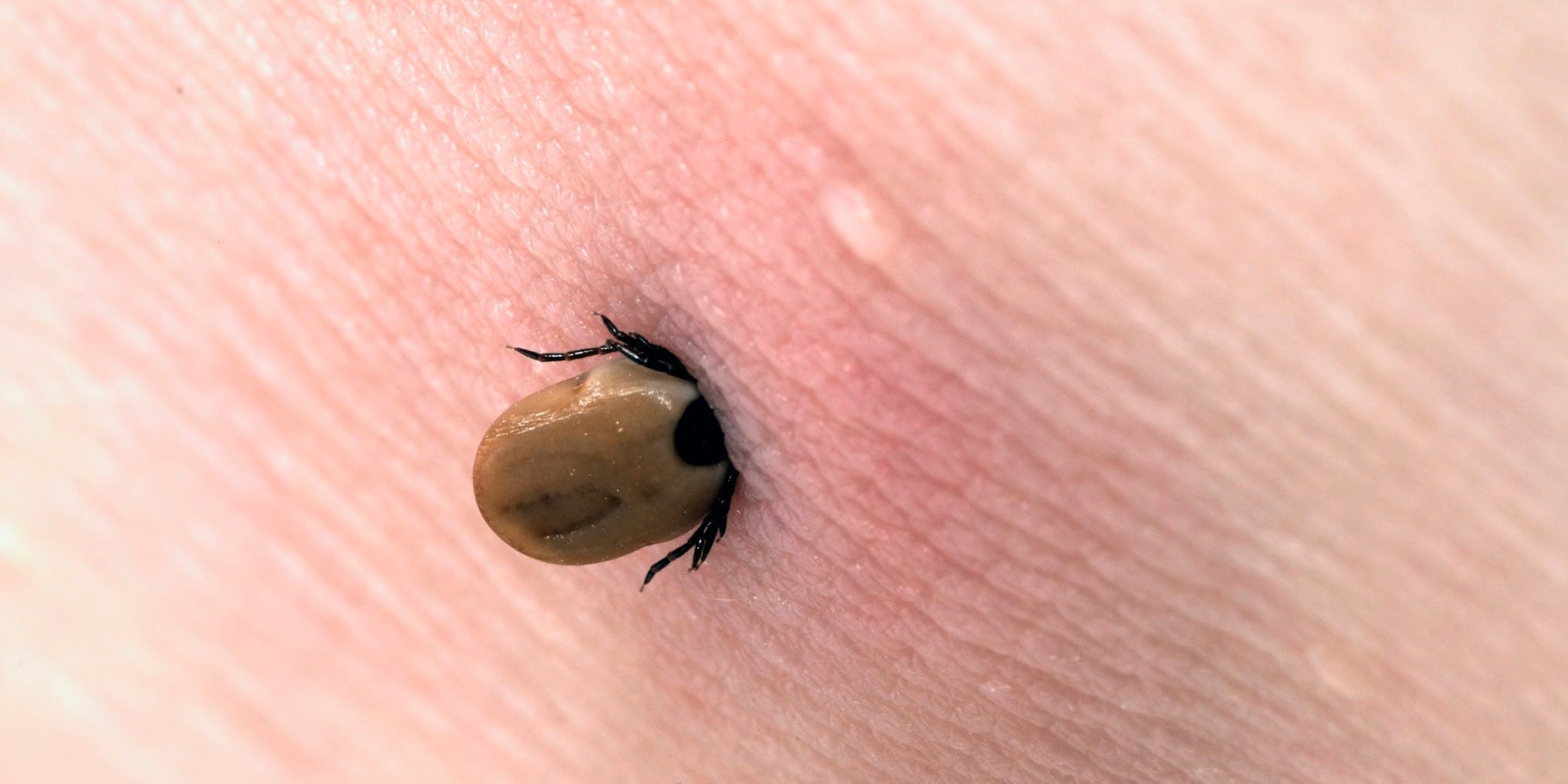
Himagine/Getty Images
- To remove a tick, take a pair of tweezers, grip the tick as close to the head and skin as possible, and then pull upward with steady pressure.
- When removing a tick avoid any twisting or jerking motions because you might break part of the tick off so it stays in your skin.
- Lastly, avoid using a match or nail polish to smother the tick because that could lead it to inject bodily fluids under your skin, increasing your risk of a tick-borne disease.
- This article was medically reviewed by Mona Gohara, MD, a dermatologist at the Yale School of Medicine.
- This story is part of Insider’s complete guide to Bug Bites.
Tick bites are often harmless, but the longer a tick stays on you, the higher your risk of exposure to a tick-borne illness, like Lyme disease.
If you stay vigilant and check yourself for ticks after outdoor activities, and know how to properly remove one, there is little chance you’ll be affected by a tick-borne illness.
Here’s what you need to know to safely remove a tick from your body if you find one.
How to remove a tick
You don’t need any special equipment to remove a tick effectively, says Andres Romero, MD, infectious disease specialist at Providence Saint John’s Health Center.
Even though many pharmacies sell specialty tick tweezers, a pair of fine-tipped tweezers is all you need to get the job done.
Here's how to do it:
1. Grasp the tick as close to its head as you can with a pair of tweezers. Try to grab the tick close to your skin's surface. This will help ensure you pull the entire tick out, and not just a part of its body.

Eraxion/Getty Images
2. Pull upward with steady pressure. Try not to twist or jerk the tick, as this can cause parts of the tick to break off and stay in your skin.
3. If some of the tick stays in your skin, don't panic. It will usually heal on its own, though you can have a doctor remove it if you prefer. Mouth parts that are left behind can cause some inflammation, but are typically harmless.
4. Do not use a match or nail polish to try and smother the tick. This can result in the tick injecting its bodily fluids into your body, increasing the risk of infection.
5. If you are concerned about tick-borne illness, you should preserve the tick in a small plastic bag after removal and take it to your doctor for testing, Romero says.
6. Or, you can simply dispose of the tick by flushing it down the toilet. Make sure you wash your hands — and the bite site — with soap and water for at least 20 seconds each to reduce the risk of infection.
What to do after you remove a tick
Aside from cleaning the area, most people won't need any additional medical attention after removing a tick, Romero says.
A tick can only transmit disease to you if it has been attached long enough to have finished its feeding, which is typically about 24 hours or longer, Romero says. So, the sooner you remove a tick, the lower your chances of illness.
If you aren't sure how long you've had the tick, you may want to consider reaching out to your doctor — especially if you live in an area where Lyme Disease is more common, like in the northeastern parts of the US.

CDC
Your doctor will likely advise you to keep an eye on the bite site, and seek further medical attention if you develop a fever or a red, circular rash, which could be signs of Lyme Disease or another tick-borne illness.
Overall, you should be on the lookout for the following symptoms and see a doctor if any of these develop within 30 days of removing a tick:
- Rash
- Fever
- Headache
- Muscle or joint pain
- Fatigue
Any following treatment for a tick-borne illness will depend on how severe it is, but in most cases, you can be treated effectively with antibiotics.
Related articles from Health Reference:
- How to spot and treat a tick bite — and what to do you if you have a tick-borne illness
- How to get rid of mosquito bites fast, and prevent them in the first place
- Bug spray can expire, but it depends on the active ingredient
